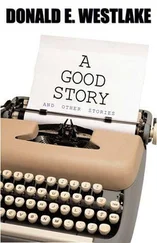3/29/95
Dear Jeff ,
I have looked at the 3 Bonds, and am now more interested than ever. Here are some thoughts .
A continuing motif, I see, is birth through water; I have no problem with that. And another theme, which I take it got lost later on, was always somehow to top the previous work; he dies and he’s buried at sea, so do something even more over the top next time .
May I ask for one more of the earlier Bonds? I’d like to see LIVE AND LET DIE again, because I’m in it .
Don was interested! We exchanged faxes — email had not yet become the norm. Don immediately had an idea involving a computer hacker who’d been stealing information from British Intelligence and the CIA. Because he’s in their systems, the U.K. and U.S. can’t use any of their wired tech, they have to go old school and thus, they turn to Bond to take on this very modern villain. The villain’s in league with some Third World financiers and their big scheme is to create chaos in the stock exchanges, destroying the entire economic system of the premier nations. As Don summed his thinking up:
This could be too cerebral a threat, but I believe it could be made the equivalent of a bomb going off .
I have not seen all 16 of the previous Bonds, nor all sixteen thousand of the imitation Bonds (I did see TRUE LIES, though), so for all I know the computer genius who will bring society to its economic knees has already been met. If not, I think he could be fun. Every day now, the newspapers have another story about how vulnerable that vast interconnected web of computer technology is, so if it’s that vulnerable, why don’t we go get it?
Don’s idea was prescient. Except for WarGames back in 1983, movies hadn’t tackled our newly wired world. Hackers (which we were in production on at UA when Don made his pitch), The Net , and all the other films that would soon explore the issues Don was intrigued by hadn’t yet been released. But there was one intractable problem with Don’s pitch (though it was also the most reassuring thing about it): clearly he had already mind-melded with our thinking about Bond because his idea was integral to the premise of GoldenEye , a villain planning to take down the world’s stock exchanges via the Internet. I filled Don in on GoldenEye ’s plot and three days later I received a fax from him that began, “Okay, Plan B. Round two. The second coming. Hello again.”
This time he proposed a story about a villain in Southeast Asia who is planning to use weather satellites to destroy all the grain in North and South America, effectively killing all the livestock, resulting in the elimination of the entire food supply for the Western Hemisphere.
That idea didn’t feel quite right for us. But Don’s excitement wasn’t dampened. He was committed to rising to the challenge of creating a new Bond story.
We arranged a trip to London so Don could meet with Barbara and Michael. I’d idolized Don for twenty years and now, suddenly, I was taking a trip to Europe with him in order to work together on building a story from the ground up. I was ecstatic, and oh-so-nervous.
The London trip was perfect. Don loved travel and he did it well. And, having had a little more time to ruminate, what ideas he had conjured up by the time we arrived!
Bond movies always begin with a pre-credit sequence, often in an exotic foreign locale. Don suggested we open on Bond running through moonlit woods. It would feel very real, very dangerous. A chyron would flash on the screen displaying the location: Transylvania. Since Transylvania is a part of Eastern Europe, it’s perfectly reasonable that Bond might have a mission there. And yet... Transylvania. It was a brilliant idea in the same vein as the brilliance Dahl brought to You Only Live Twice . It’s unexpected, attention-getting (immediately you’re leaning forward because this is and yet isn’t a typical Bond opening), funny while still grounded.
Then Don unveiled his biggest idea: if GoldenEye succeeded — a necessity for the 18th Bond film to be greenlit — then we knew the studio would want the film currently known only as Bond 18 to be released in theaters by 1997. This was a certainty because MGM/UA was going be sold in 1997, and to attract the highest bids it would need a slate that promised bankable films. Another certainty was that one of the biggest events of 1997 would be the handover of Hong Kong from the United Kingdom (Bond’s employer) to China. What if Bond 18 was the first James Bond movie that correlated with a real historic event, one that happened simultaneously with the film’s release?
It was bold and exciting. We were thrilled by the possibilities and locale (Bond hadn’t spent real time in Hong Kong since The Man With the Golden Gun ). A deal was quickly made and Don went to work writing a treatment.
I’m fascinated by how ideas take shape and how writers write. Some writers outline extensively, some start with an ending and work backward, some write a bunch of scenes in no particular order and with no obvious connection and then eventually pick a few of the best and build a story around them. None of these were Don’s method. He relied on what he called “narrative push.”
Don would get an idea, usually for a beginning, an opening scene, something like, What if there’s a bank robbery in progress and the getaway car can’t find a parking space in front of the bank? (This was the idea Don said was the spark for writing the first of his Dortmunder novels.) Don would start from a premise like that and just write, without any plan for where he was going, trusting that eventually he’d end up with a story. He told me there was only one story he ever started that he couldn’t puzzle out a way to finish. It involved insurance fraud and after six weeks Don realized he’d written his characters into such a tight corner he was unable to keep them moving all the way to a resolution. I hope one day Hard Case Crime will unearth the manuscript and we’ll get to see Don’s version of an impossible story.
But the method worked for him the rest of the time, and as a consequence, Don didn’t outline.
Bond films work differently. For those, a treatment — basically an outline — that represents a blueprint for the story is required before we send the writer off to draft a screenplay.
When a writer who doesn’t naturally outline is asked to do so, the result is often either dry, like a mathematical proof — B follows from A; C from B — or cartoonish because the real voice of the characters and the tone hasn’t yet been found through the writing. As far as I know, Bond 18 was the first time Don had ever been required to perform the interim step of fully plotting out an original story in a relatively schematic fashion. Not his natural process, but he gave it his all.
In September 1995, Don delivered a thirty-five page treatment for Bond 18 .
It was a delight to read. Every page brimmed with ideas and fun. But not all of it worked, or at least worked for us. For example, Don had come up with an intriguing new pre-credits sequence, but Bond was absent from it. We needed one with Bond in it. Don had also placed most of the action in Australia, and while amusing — Q equips Bond with a boomerang “that goes boom” — the Crocodile Dundee movies were still pretty fresh in people’s minds, creating a risk that the overlay would tilt us toward unintentional comedy.
Fortunately, because GoldenEye ’s release date was still two months away and we didn’t yet know if it would be successful enough to trigger pre-production on the next film, we had some time to work on Bond 18 . So we sent Don off to write a new treatment that satisfied our Bond parameters.
Читать дальше
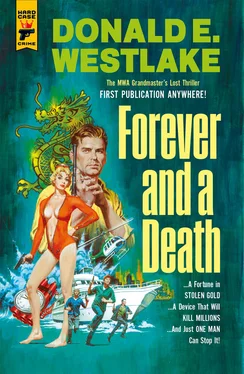


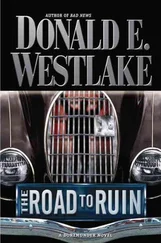
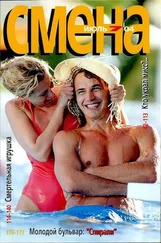
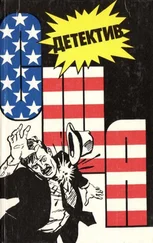
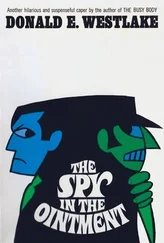
![Дональд Уэстлейк - Enough [A Travesty (novel) and Ordo (novelette)]](/books/416846/donald-uestlejk-enough-a-travesty-novel-and-or-thumb.webp)
